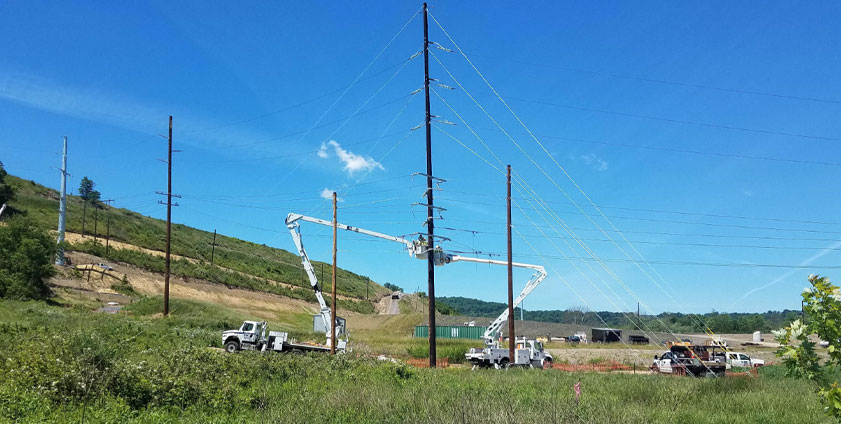Lining Up for Takeoff

June 3, 2021
After four years, the regional airport near Cumberland, Md., is halfway through a more than $30-million, multi-year construction project that will include needed runway upgrades and the potential development of a new business park at the property. To set the table for the next phase of renovations, the airport partnered with Potomac Edison over the past year to perform some extensive power line work, now nearly complete.
Last summer, Potomac Edison completed a $4-million relocation and reconstruction of half a mile of transmission and sub-transmission lines that will allow the airport to add a 500-foot safety overrun area at its main runway, which will ultimately be rehabilitated and total more than 5,000 feet in length. Now, the utility is finishing up work on the west side of the airport, where it is burying two overhead power lines at the site of the future business park.
To lengthen the airport’s safety overrun area, Potomac Edison crews relocated a transmission line that crosses over the North Branch Potomac River from Maryland into West Virginia, rebuilding it around the runway expansion area. With limited right of way along the river, the team rebuilt two sub-transmission lines along the same route, beneath the larger transmission line.
Separately, Potomac Edison has taken two overhead power lines that stretched across the planned business park parcel and converted them into underground lines that will continue to supply power to the airport’s hangars, fuel farms and other buildings. With the lines buried, Ryan Shaffer, general manager of the airport, expects to have seven to 10 acres of land for a business park that could be leased to office tenants or aviation-related companies.
The Cumberland facility serves smaller personal aircraft and corporate aircraft, seeing between 15,000 and 20,000 flights annually. Shaffer hopes that the airport can continue to attract new aviation activity and demonstrate to business owners and decision makers that their companies don’t necessarily need to be located near a large, commercial airport.
“You can get anywhere in the world with a 5,000-foot runway,” he says.